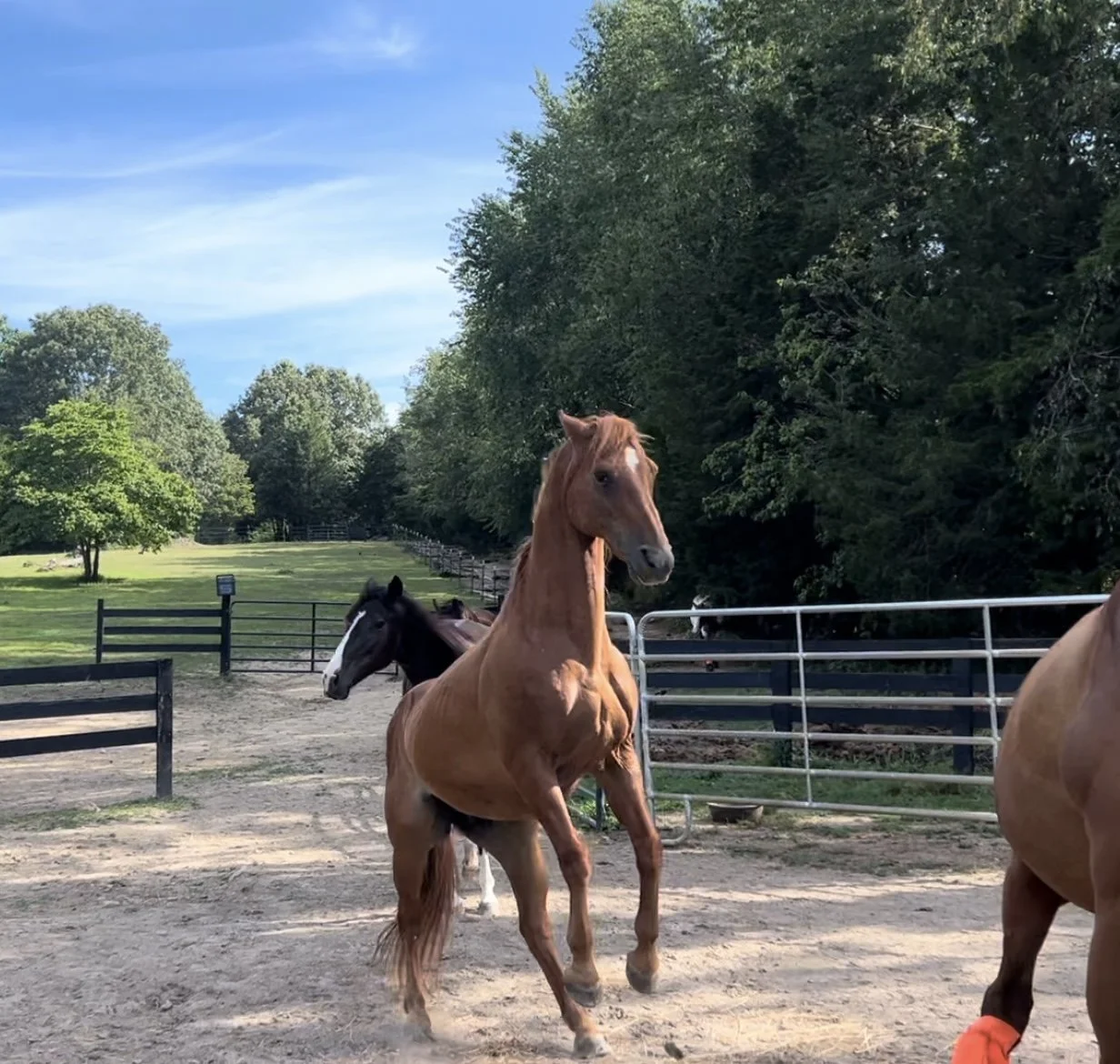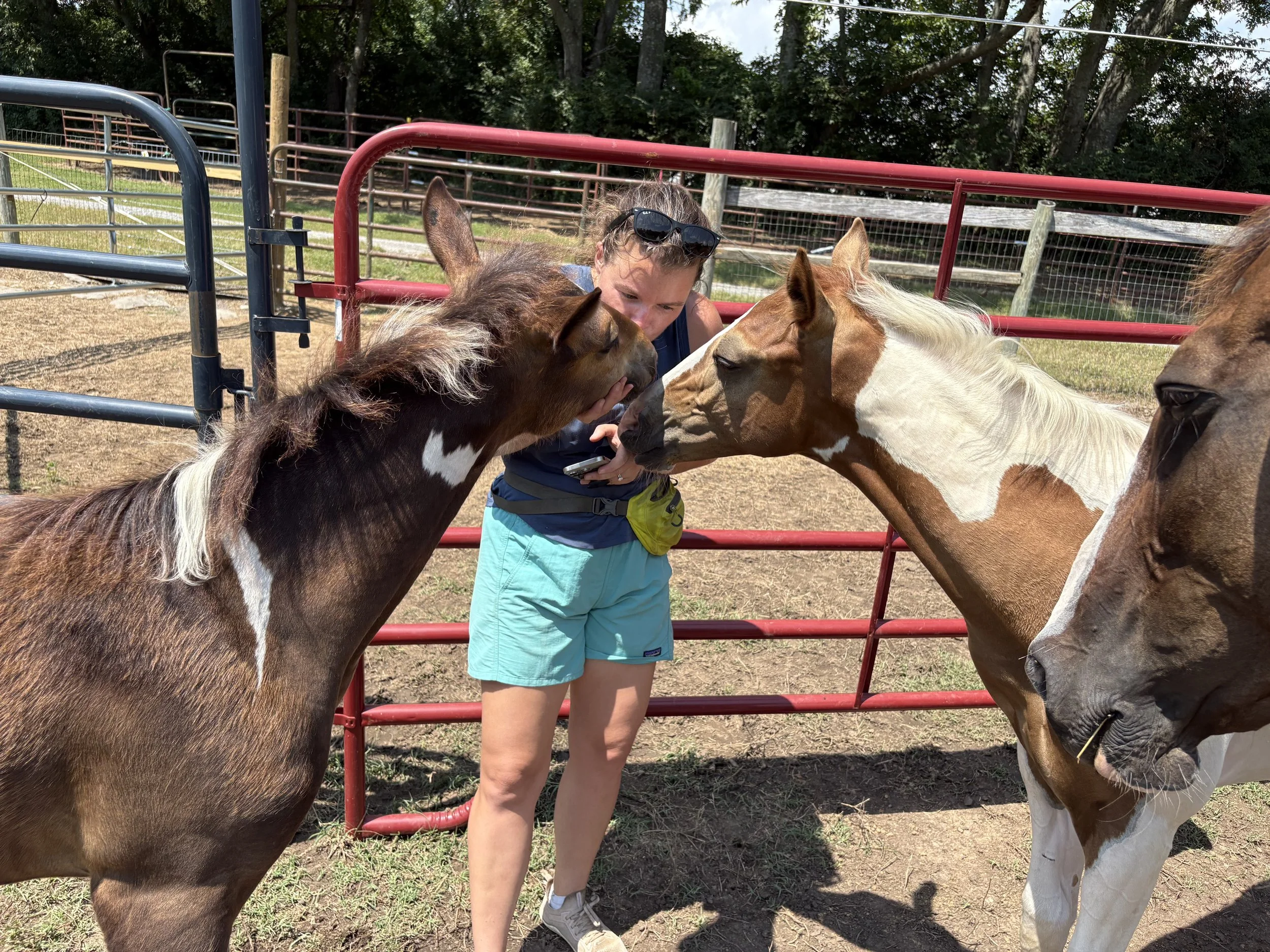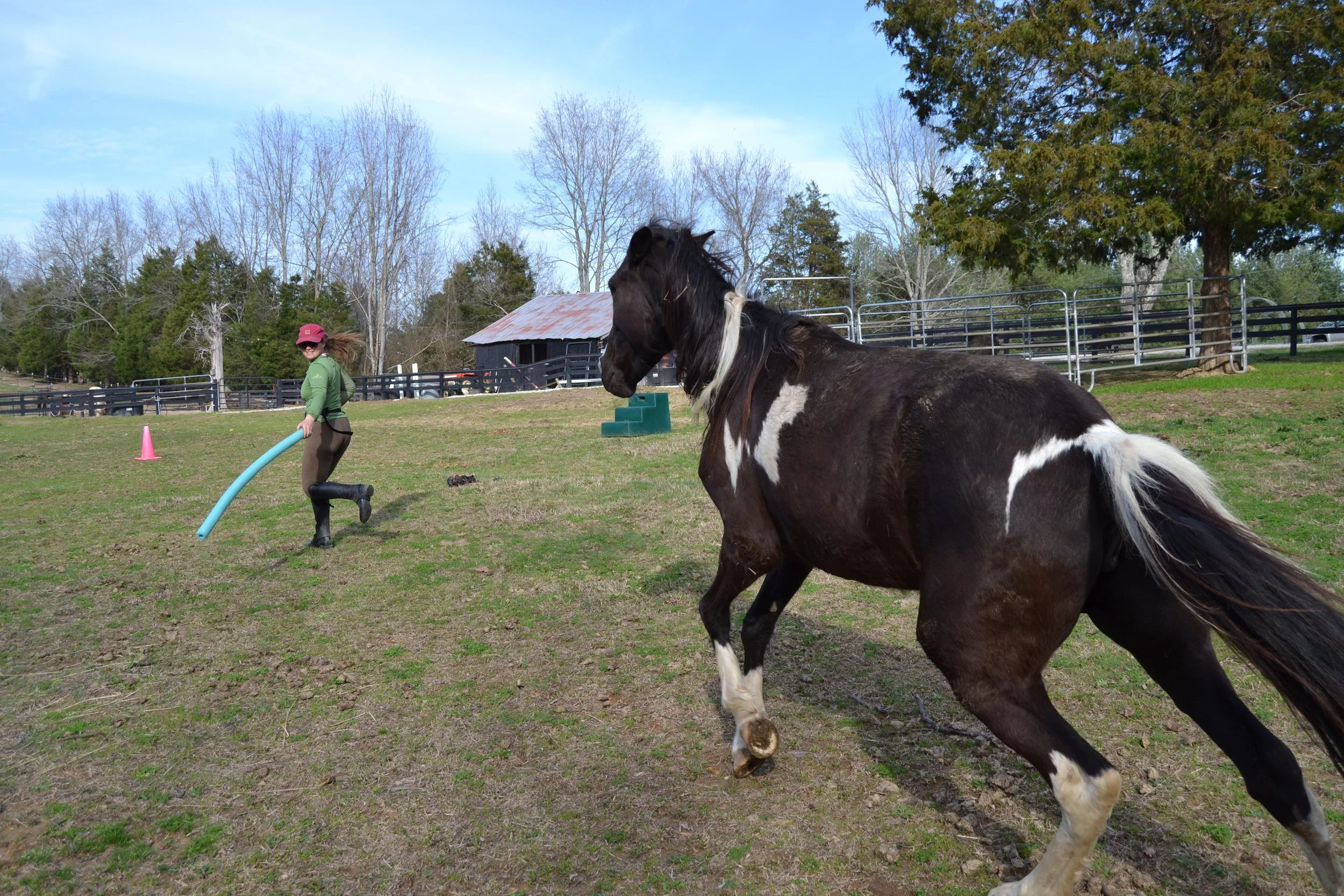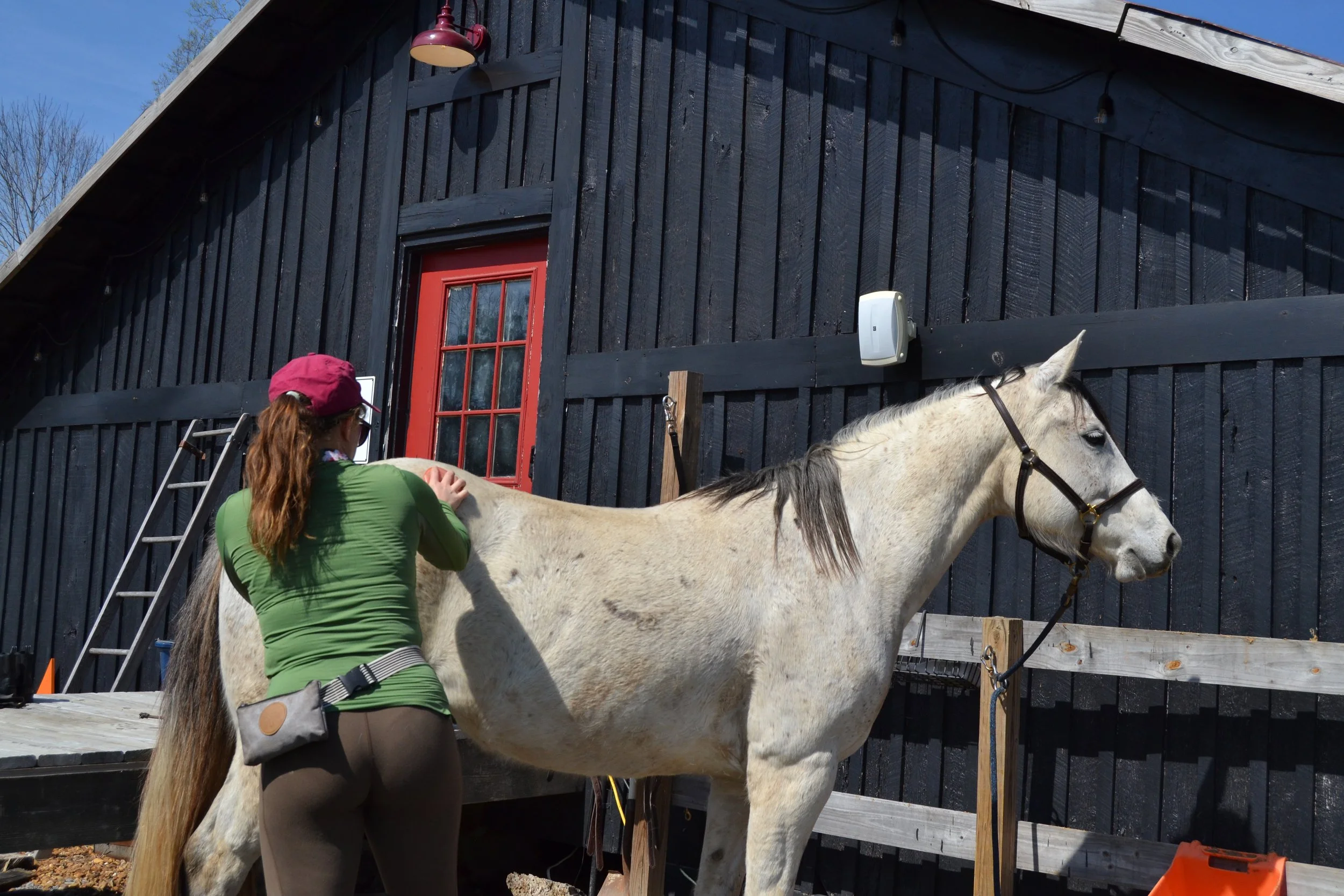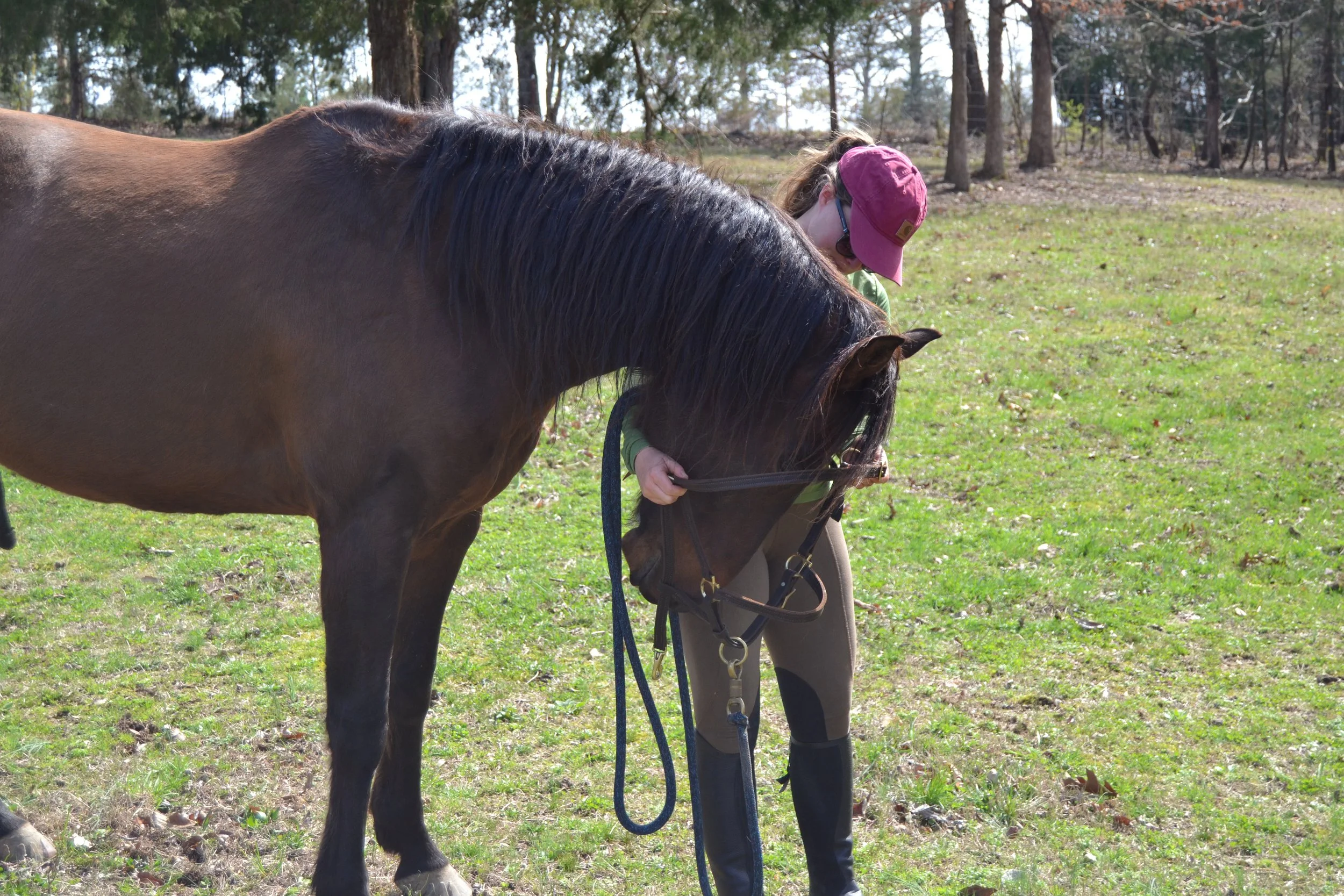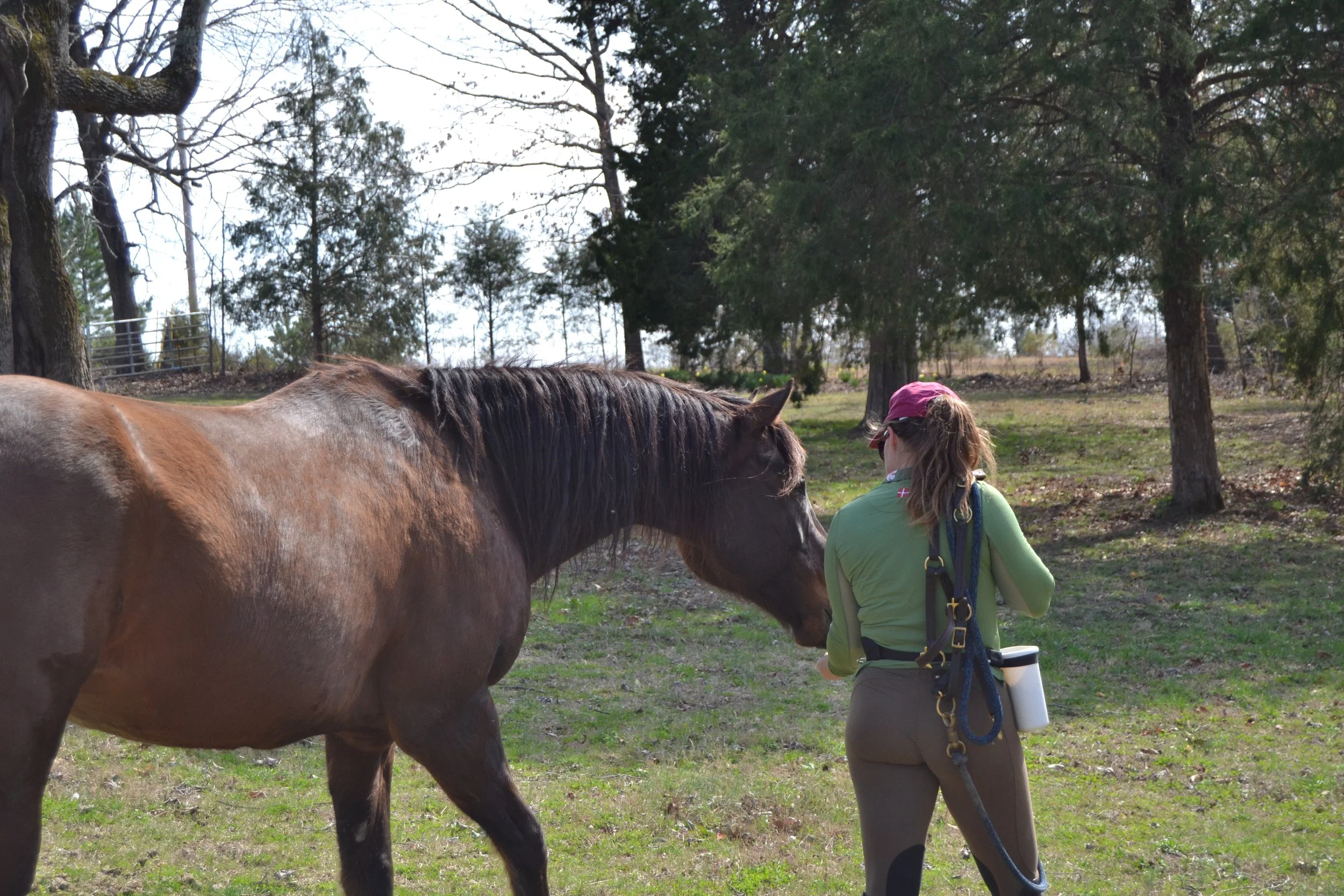We’ve all seen it: your horse is turned out in the pasture, tail flagged high, cantering across the field like they’re auditioning for the next Black Beauty movie. Their movement is big, expressive, and seemingly effortless. They buck, they leap, they gallop — and you think, “They look amazing!”
Then you bring them into the arena, saddle up, and suddenly… it’s a different story.
They feel resistant to moving forward.
They stumble or trip in certain spots.
They break gait, hollow their back, or struggle to maintain canter in one direction.

